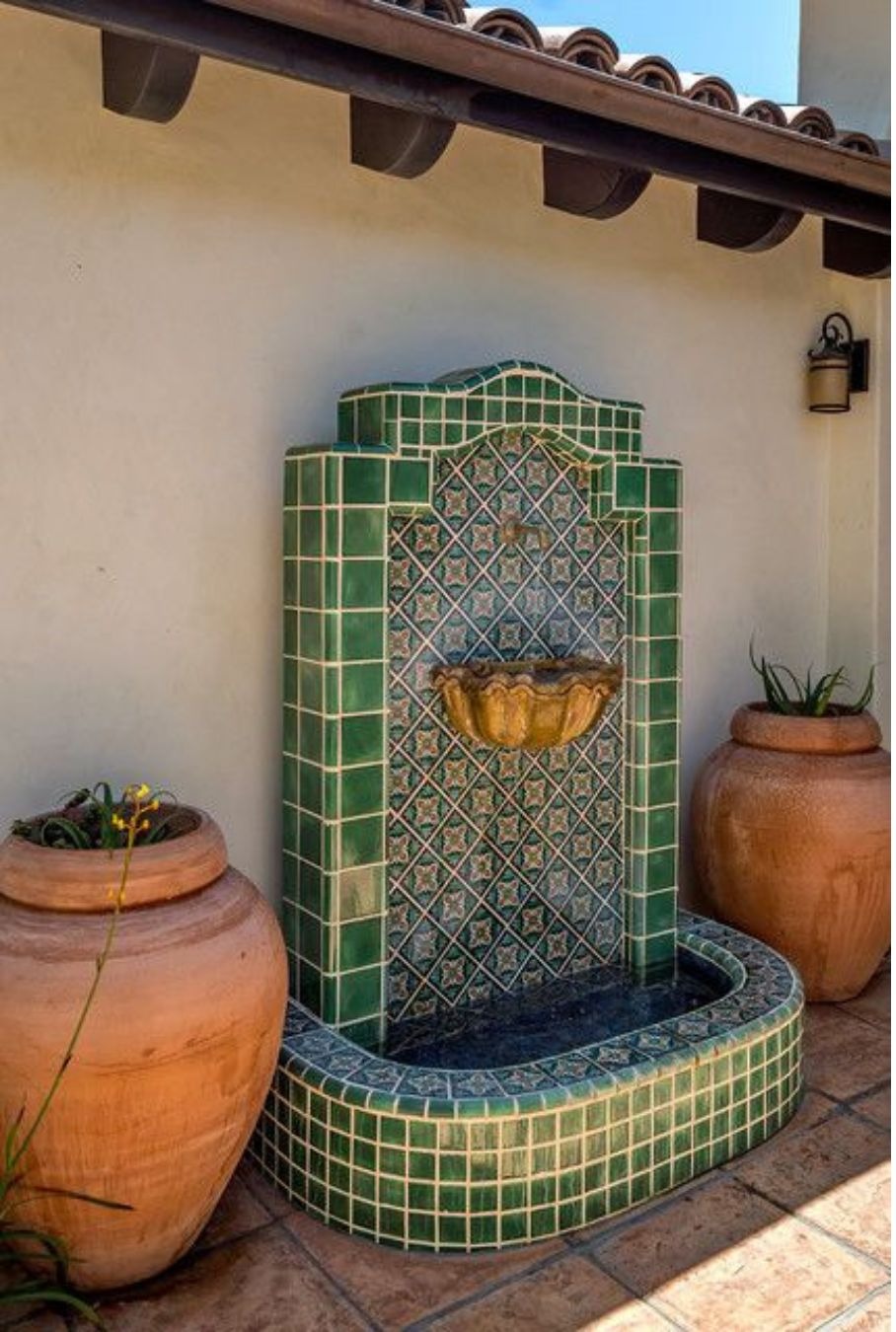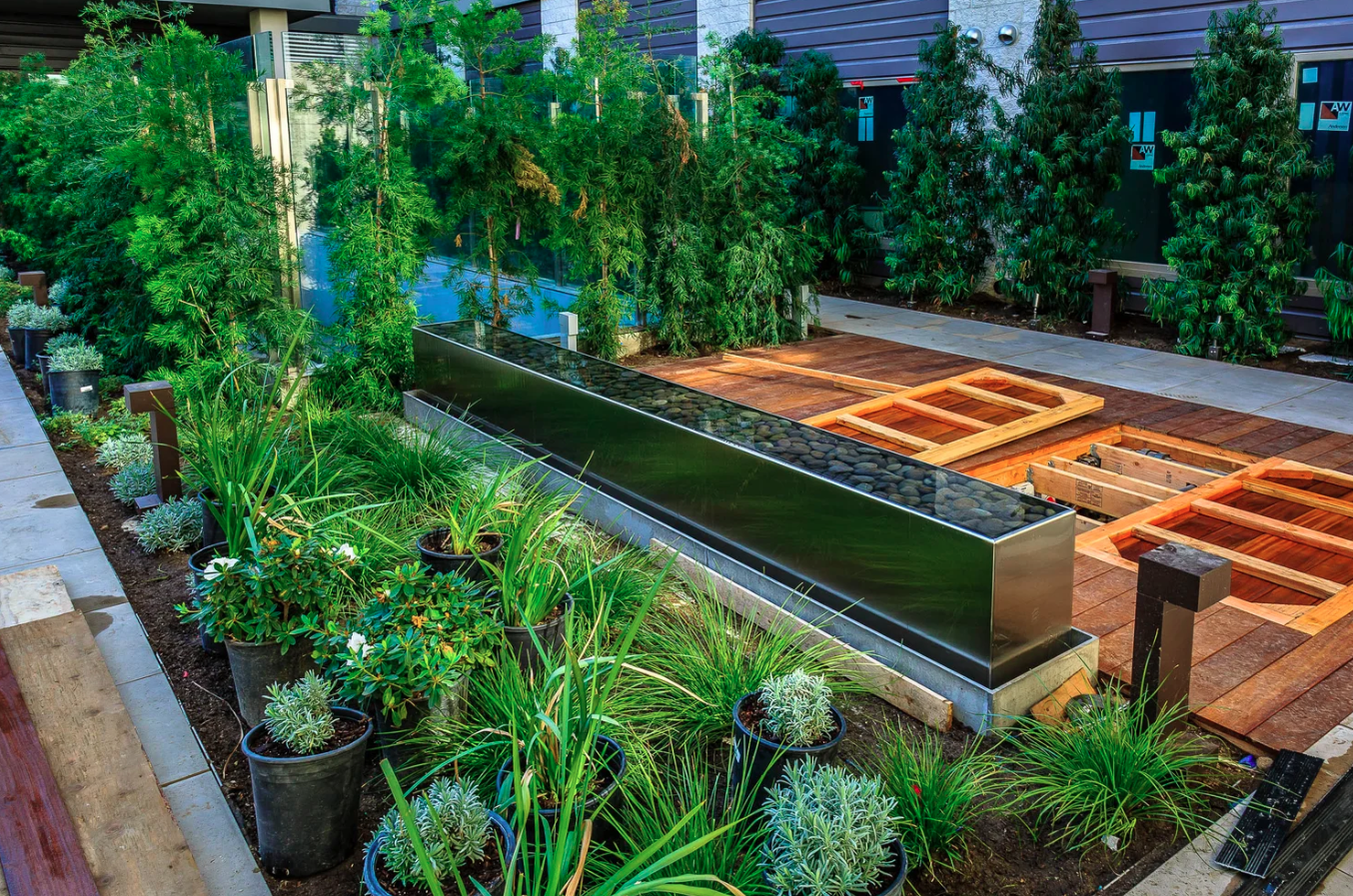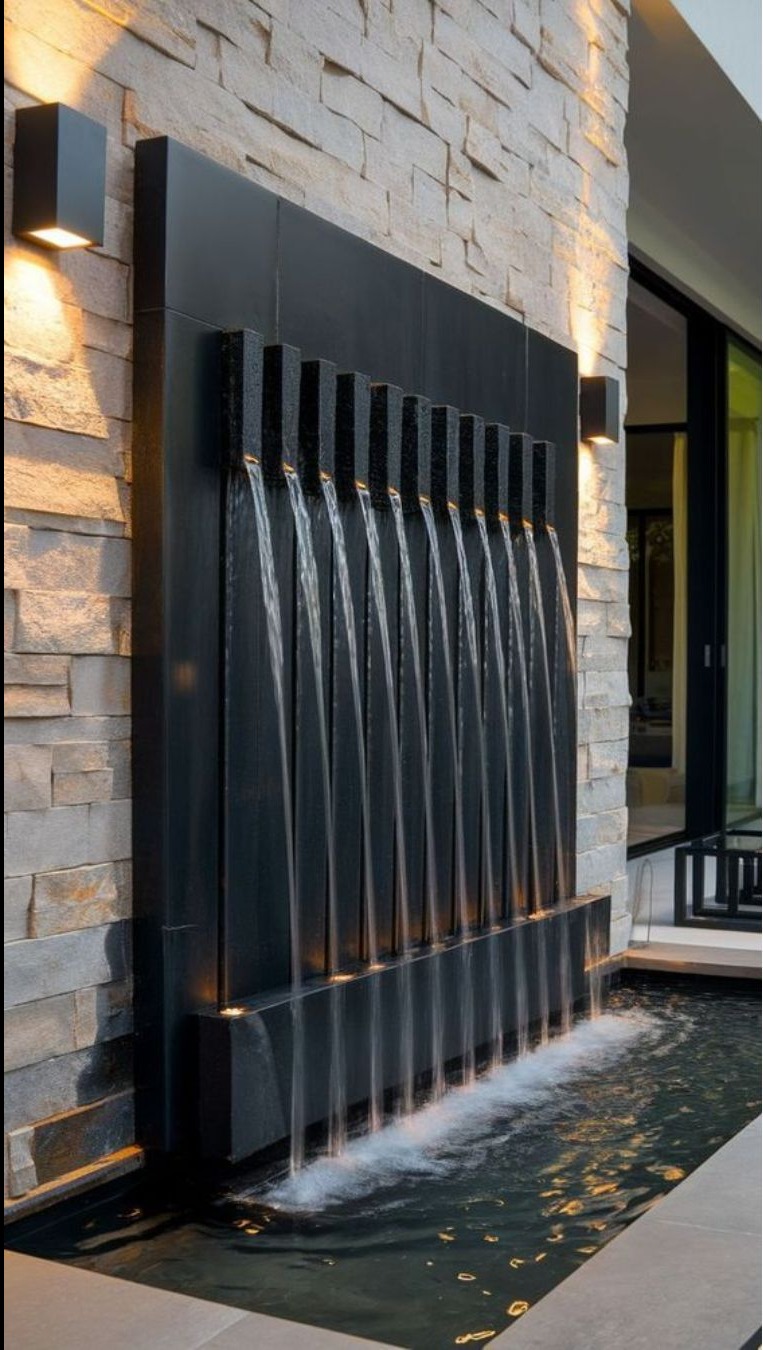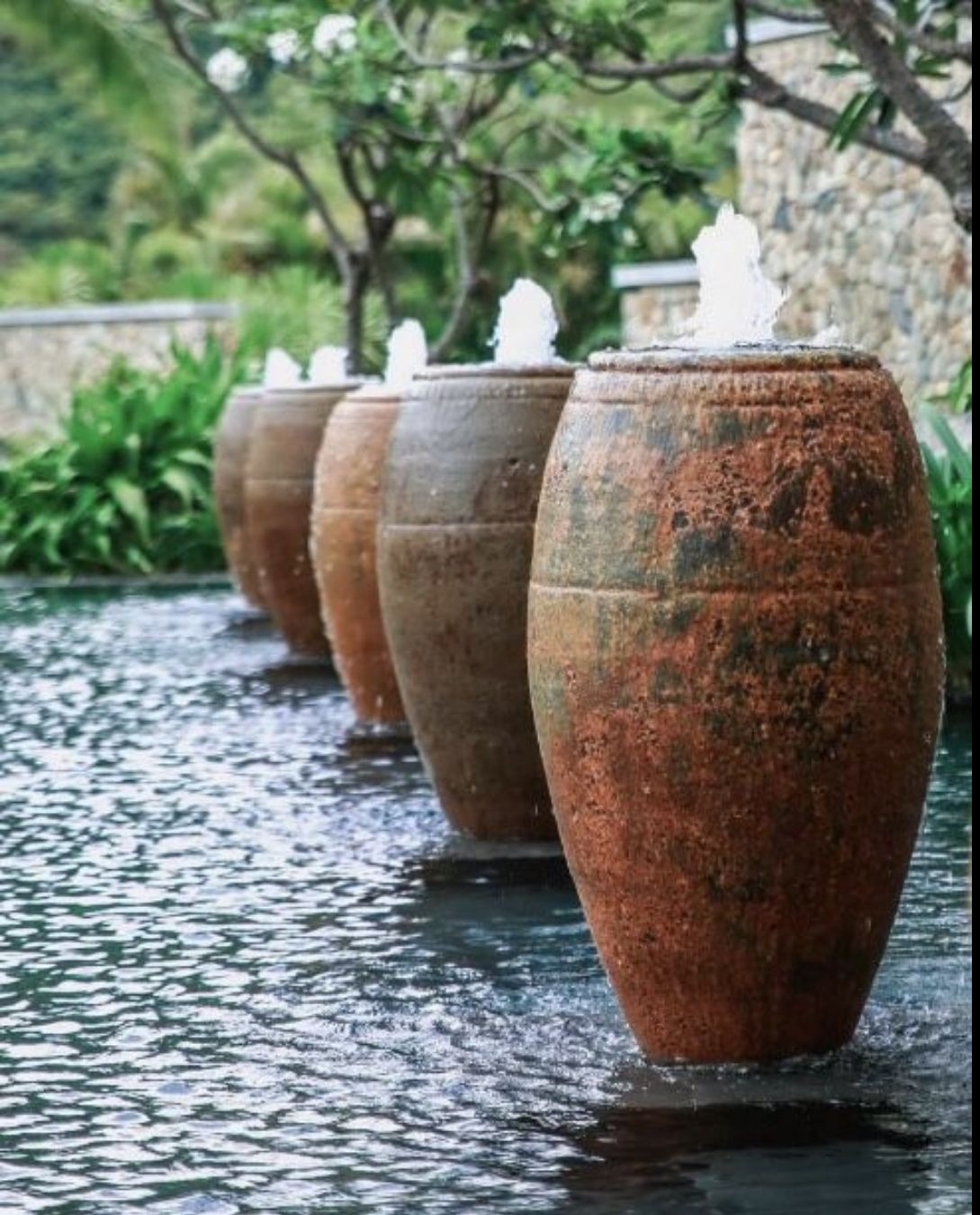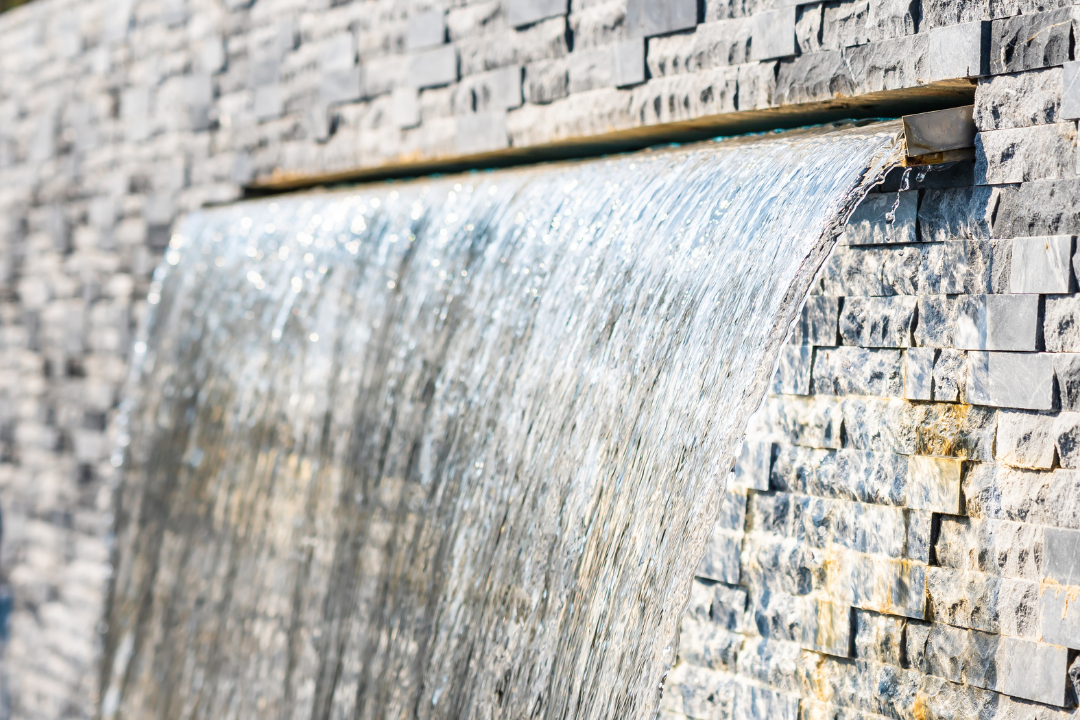
STRATEGIC PLACEMENTS
So how can you achieve optimal aural effects? For me, the best way is to run through a list of water-specific sounds and the images they conjure from babbling, splashing, meandering and trickling to dripping, splattering, plopping, plunging, gurgling, and gushing,
These words alone should evoke powerful images for you and your clients. More important for you as a professional, they should stir sensations of very specific sound effects and sensations for which you can strive as you compose your water shape, stone by stone, layer upon layer, from one descent to another. These words help you stay focused as you move from the headwaters and down through the cascades to the channels and eventually to the pool or pond.
As you work, consider the rhythm of falling water. By moving stones around to create shorter drops or by dropping water over rock by rock instead of as a straight fall, you change the pitch and sequencing of the sound. For starters, this variation in sequencing of drops creates great acoustic interest. And as it becomes more varied, it also becomes more complex in pitch as well as rhythm. With careful placement of just a few stones, you can create a rich tapestry of sounds even in a tiny water shape that takes up just a few square feet.
A caution: Work carefully with the scale of sound made by the "sheet falls" that fit so beautifully into a variety of designs. These curtains of water are patterned after the world's great waterfalls (think Niagara); with their weirs or nozzles perfectly placed above a flat water surface, a sheet of water falls over and down into a lower basin. This makes for great visuals and a very distinct type of noise. As I see it, however, the sound here is not really a rhythm but, rather, a constant noise, especially in large applications.
To my way of thinking about water and sound, these large sheet falls are well suited to the public arena, but less effective in backyards. In a public plaza, the observer pauses at the site for a limited time and the opportunity for intimate reaction is constrained by the open setting. These spaces work for a quick break, brief relaxation or a winding-down period, but exposure tends to be limited and the monotone of the falls works perfectly in creating drama, in drowning out traffic noise and in achieving other large-scale, blunt effects.
If the same type of fall is placed in a residential setting, however, the constant sheet of water and fixed sound may dull the senses rather than heighten them--and might even become annoying. The effect isn't so much a sense of connection to the setting as it is a matter of creating "white noise." It may dazzle the eye, but in the long run, it pales in comparison to a water shape designed to reflect nature in greater variety.
That's not to say that sheet falls never work. In fact, many brilliant backyard water features associated with pools in particular include falls of this type in their designs. My suggestion here is to take up the challenge of my second constant question - that is, "What do my clients hear?" - and think about ways of "fine-tuning" the sounds the sheet of water makes as it hits the pool or pond.
Often, for example, I will add splash stones at the bottom of the falls, extending them out from the edge of the receiving basin to break the falling sheet of water and alter its aural component. This very simple step lends a different rhythm to the falls and enhances the complexity of the sound without disrupting the visual drama of the sheet fall itself.
Keywords
eye
list
ways
edge
site
fact
pool
rock
pond
world
words
pitch
weirs
layer
spaces
nature
bottom
senses
matter
Niagara
caution
designs
clients
example
nozzles
best way
babbling
curtains
observer
long run
monotone
channels
starters
cascades
backyards
same type
challenge
variation
headwaters
sensations
suggestion
connection
sequencing
comparison
complexity
opportunity
white noise
simple step
one descent
fixed sound
square feet
quick break
lower basin
professional
visual drama
public arena
public plaza
limited time
open setting
great visuals
rich tapestry
falling water
traffic noise
falling sheet
splash stones
distinct type
straight fall
shorter drops
constant sheet
constant noise
exposure tends
aural component
powerful images
greater variety
receiving basin
brief relaxation
tiny water shape
great waterfalls
different rhythm
careful placement
large sheet falls
intimate reaction
large applications
flat water surface
residential setting
winding-down period
STRATEGIC PLACEMENTS
water-specific sounds
optimal aural effects
specific sound effects
great acoustic interest
second constant question
other large-scale, blunt effects
many brilliant backyard water features

